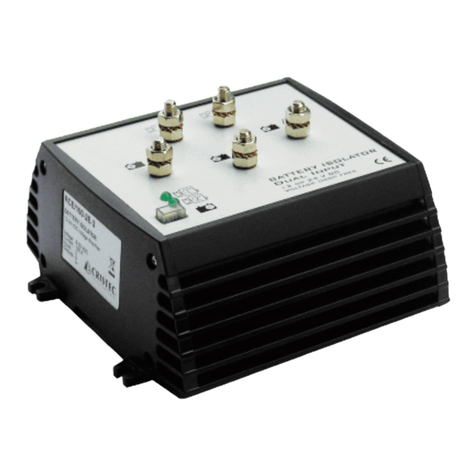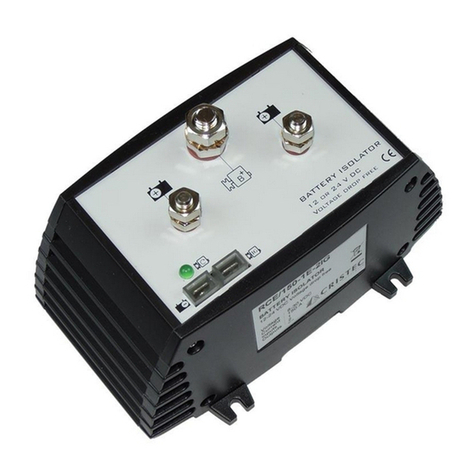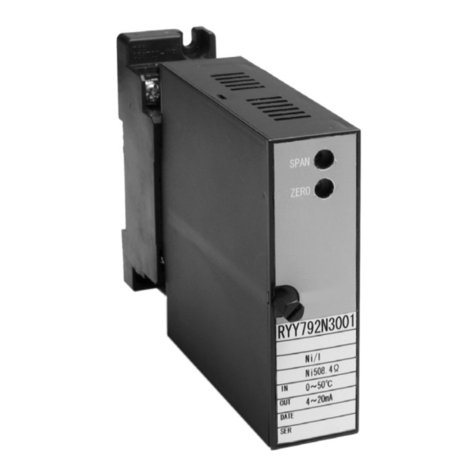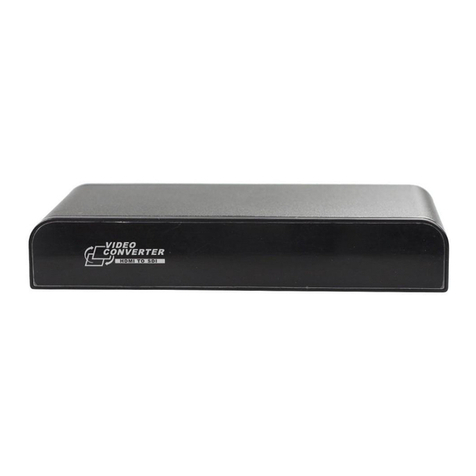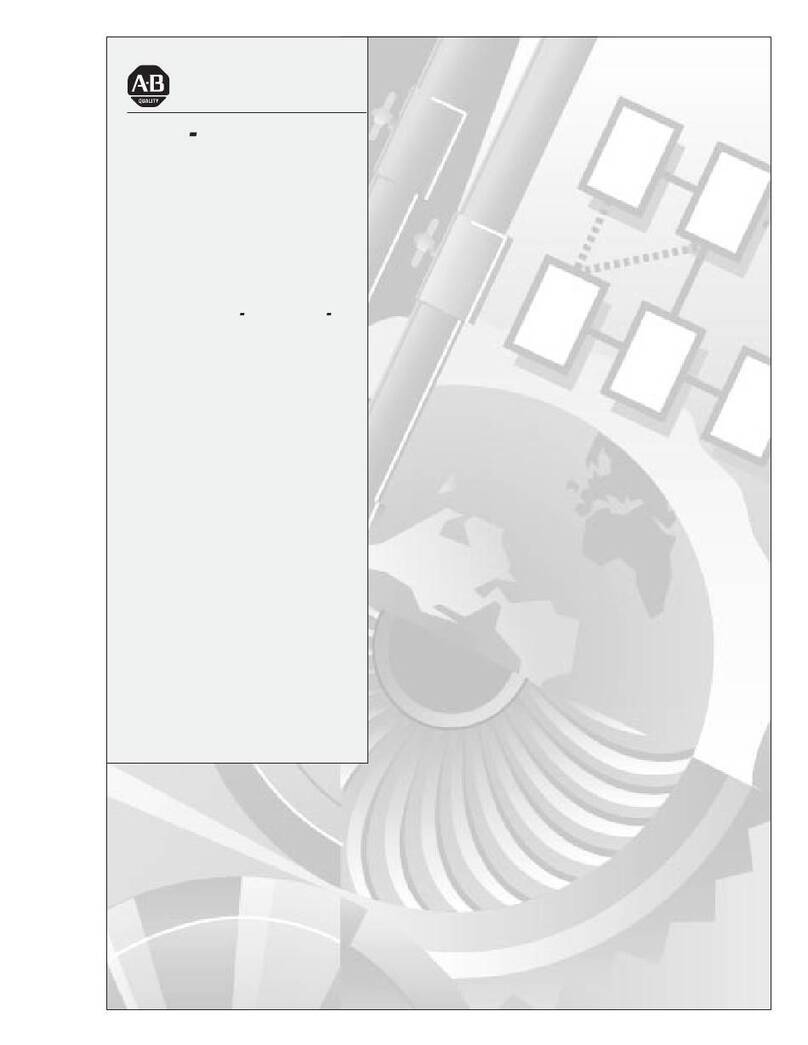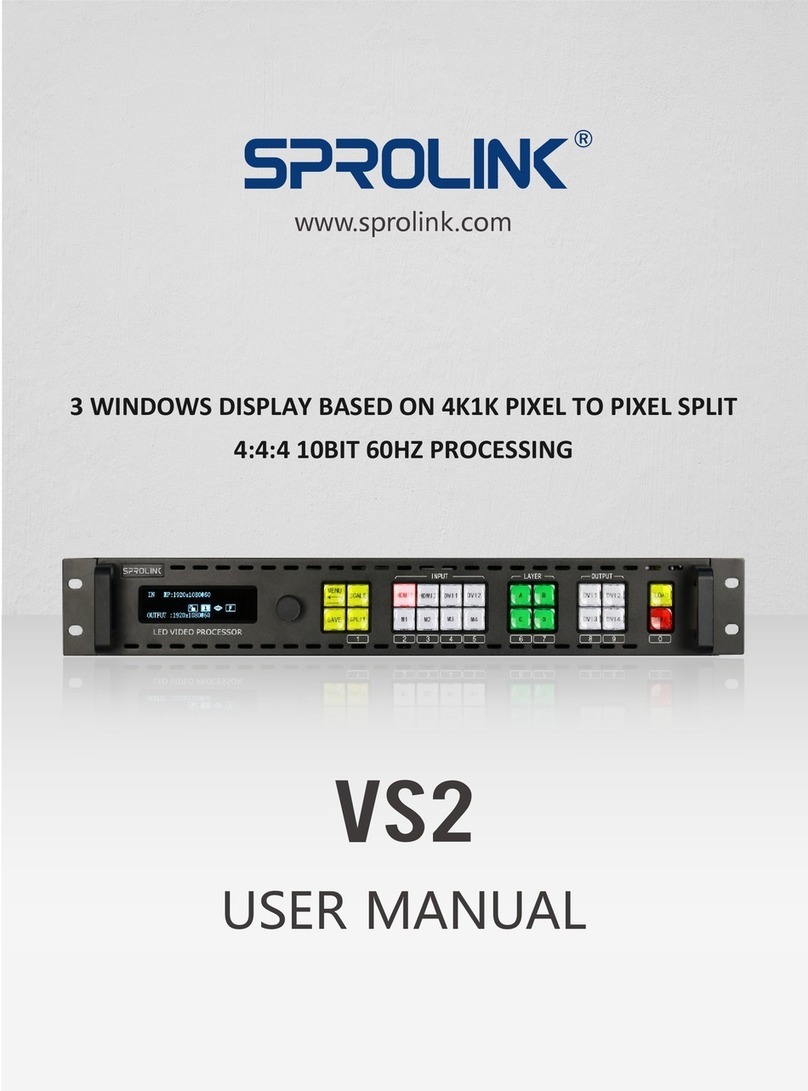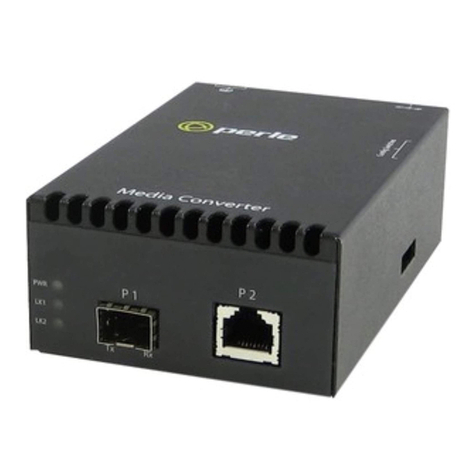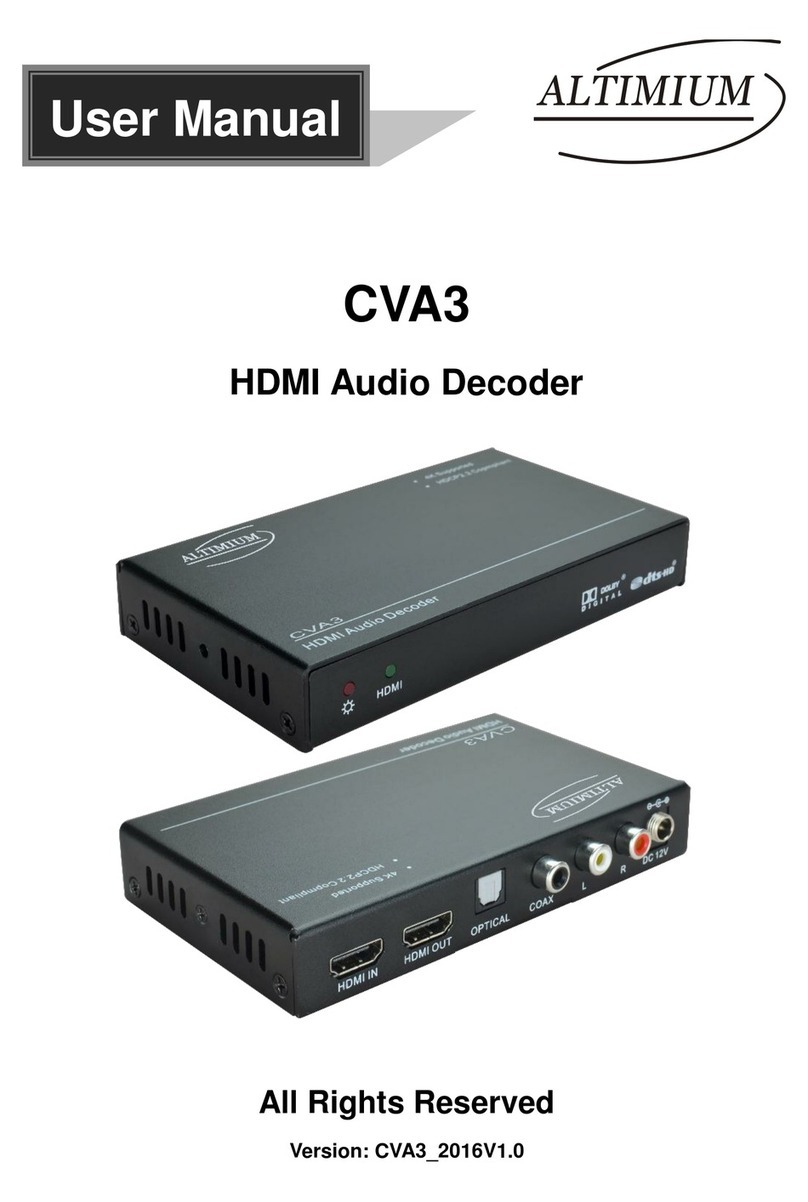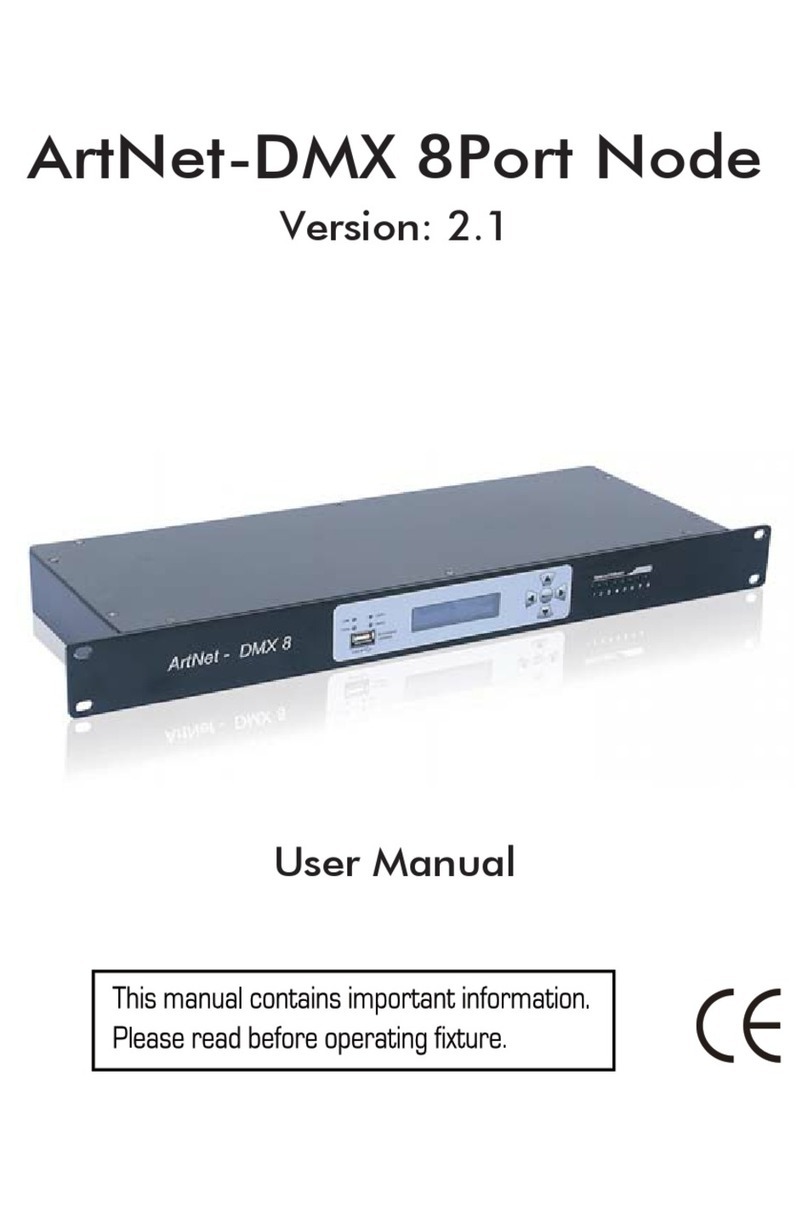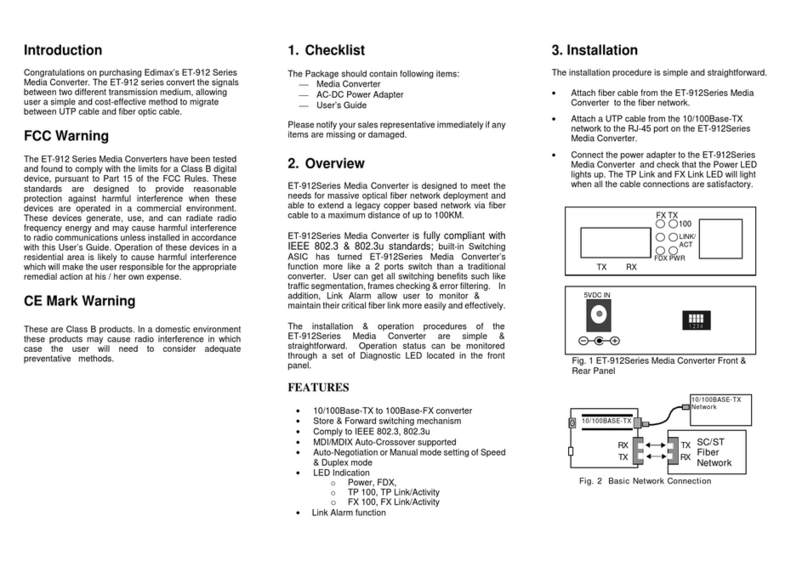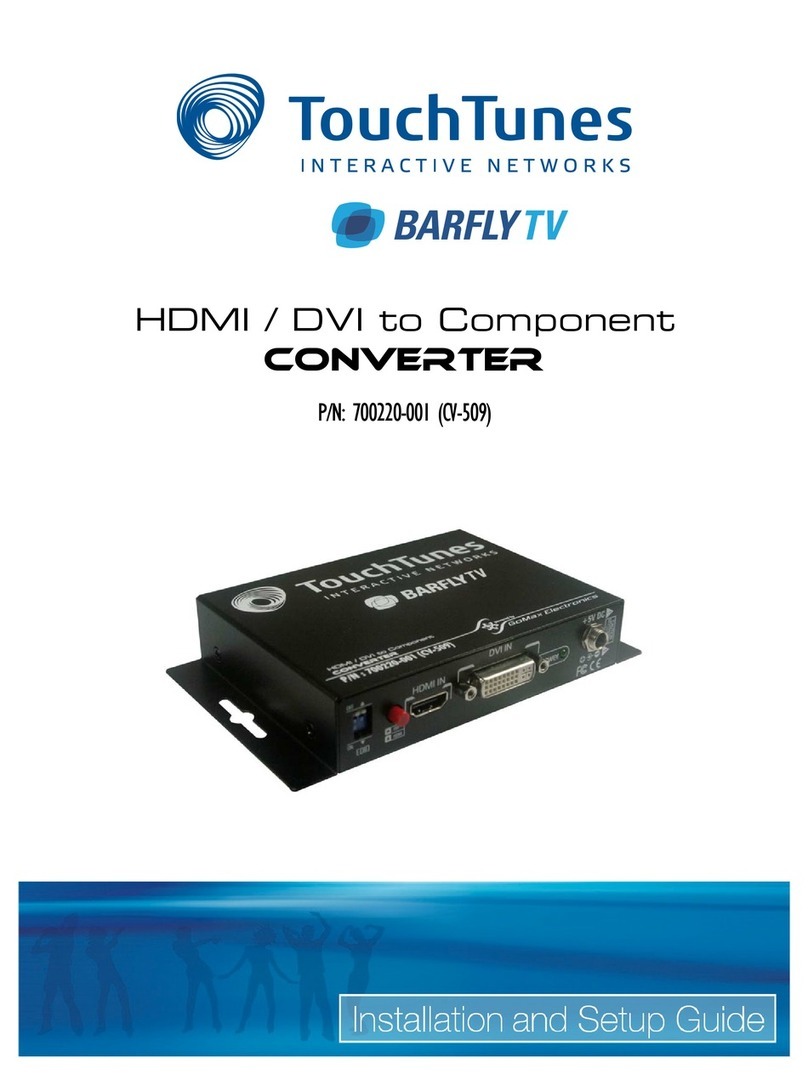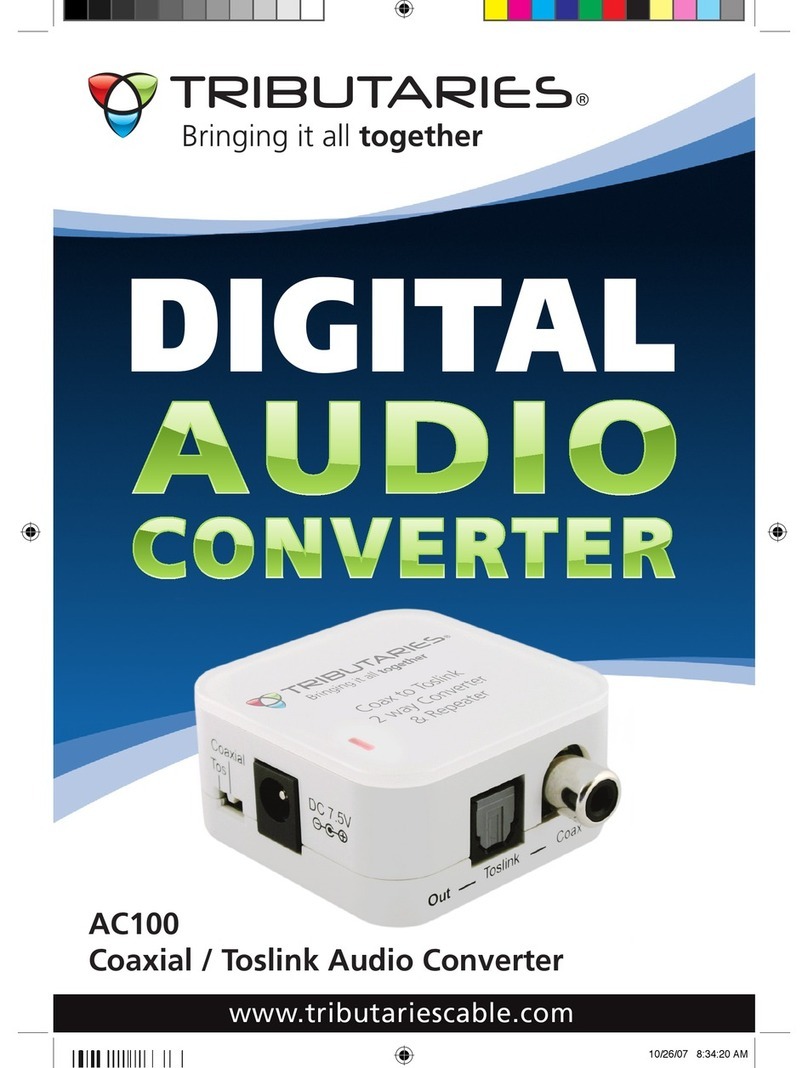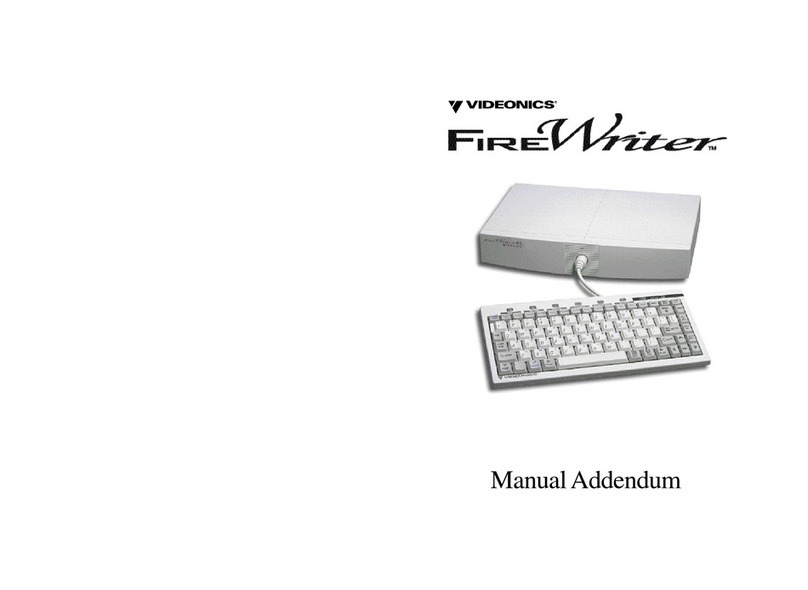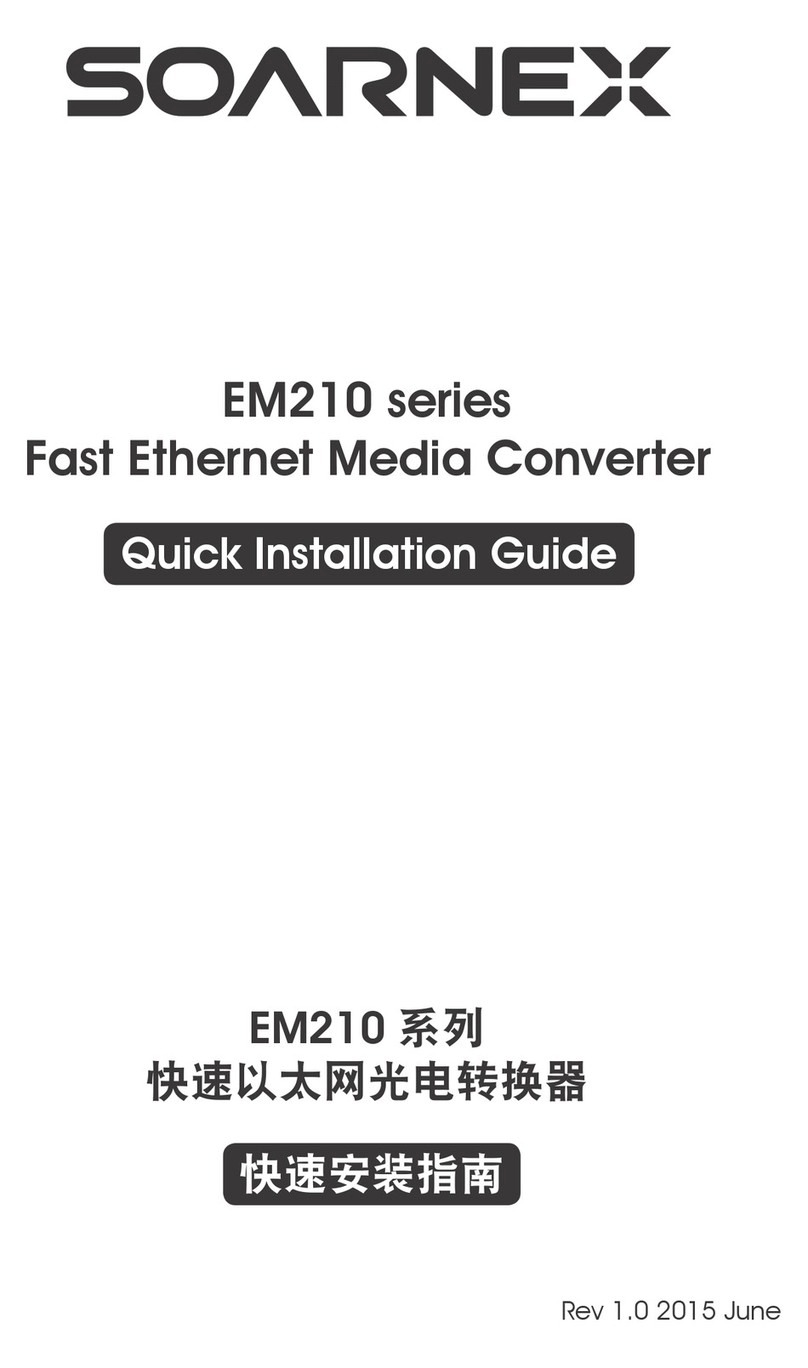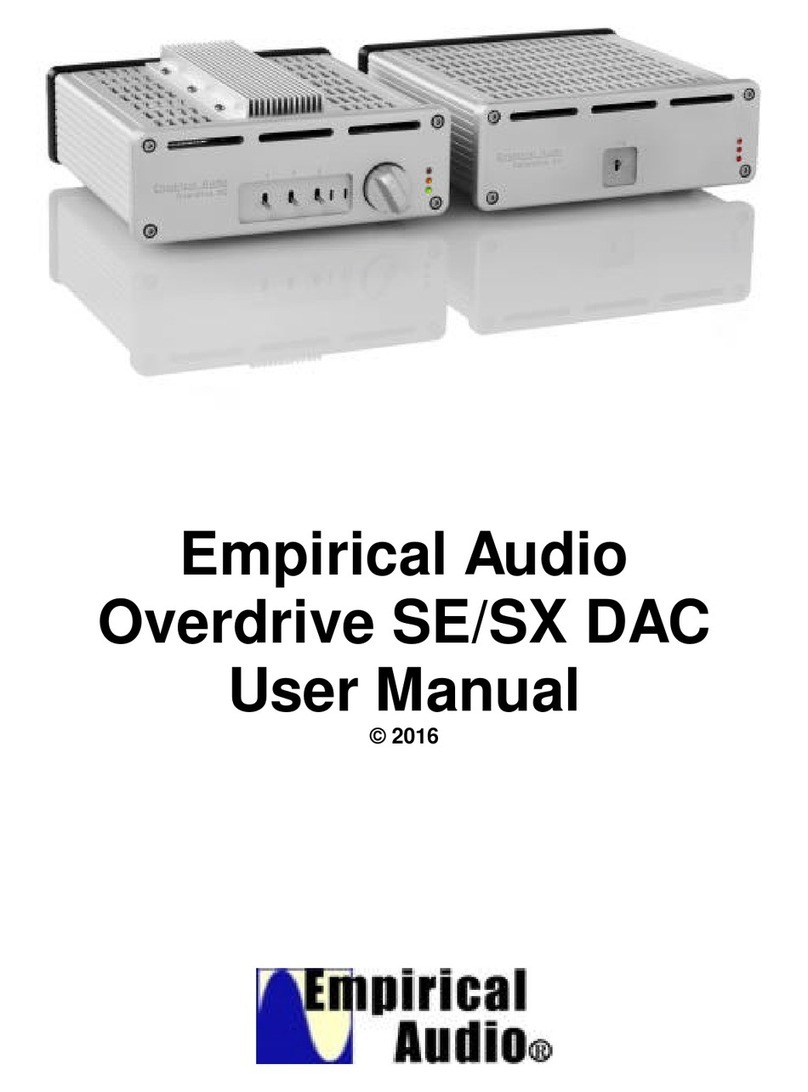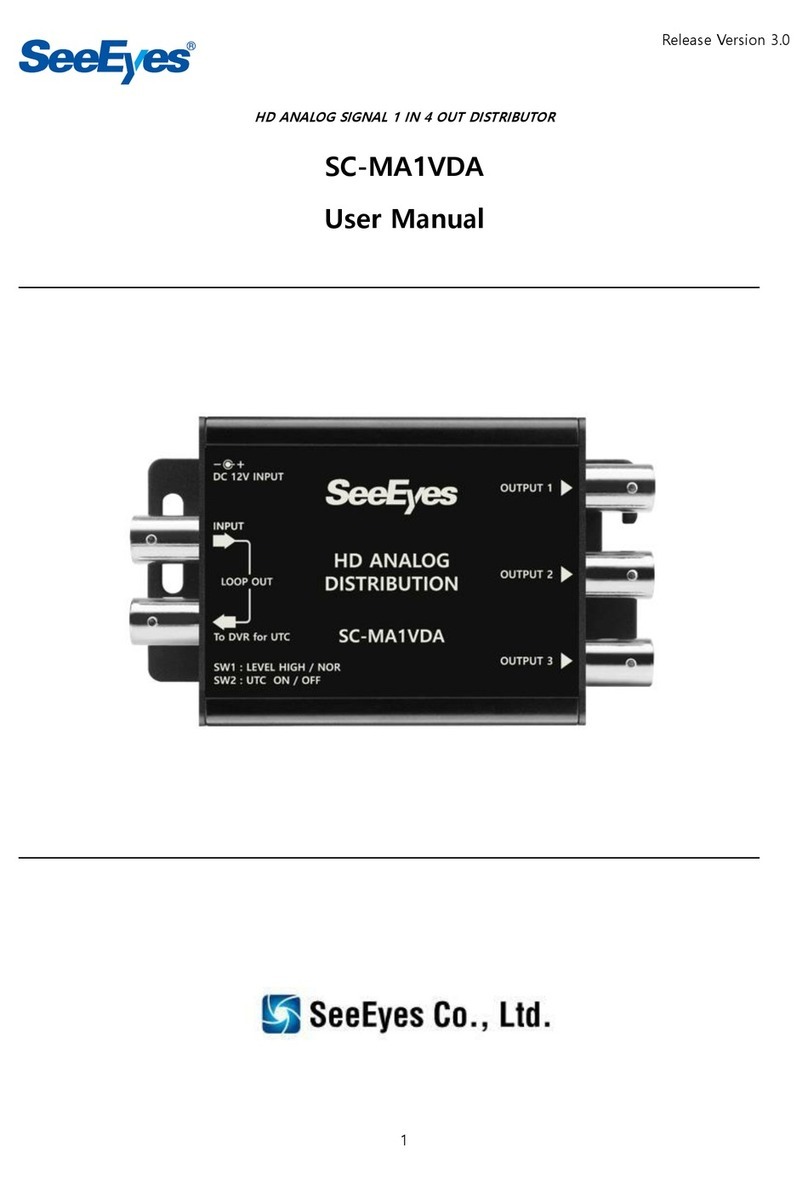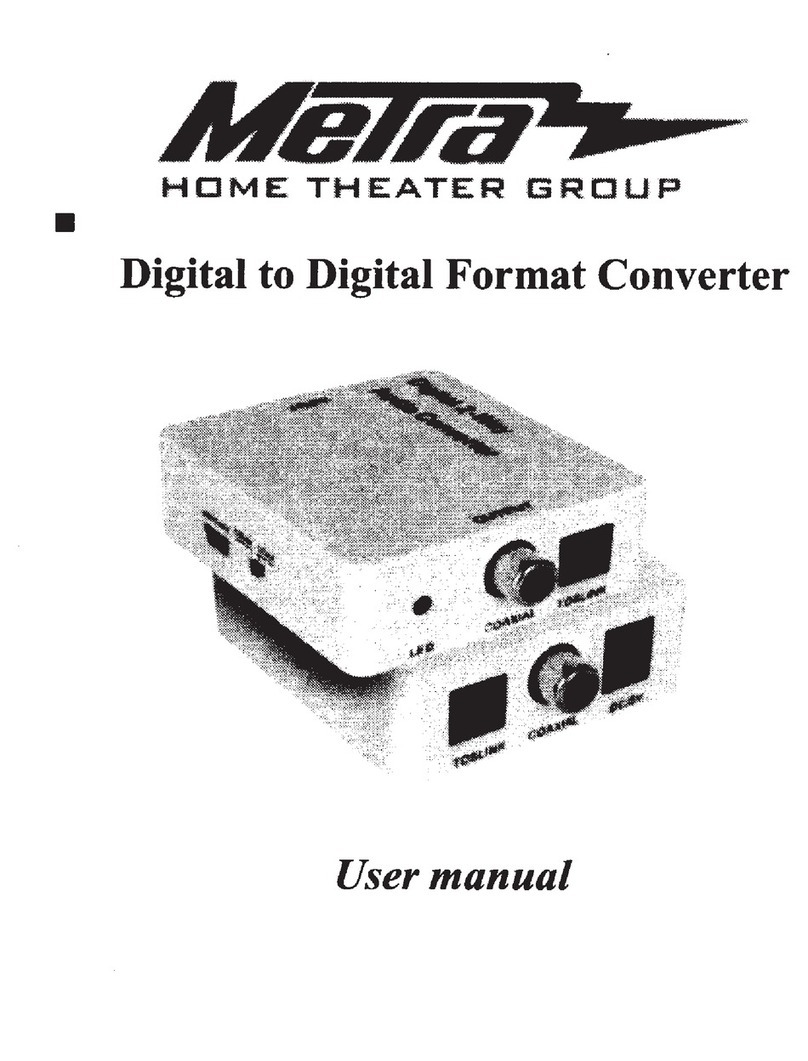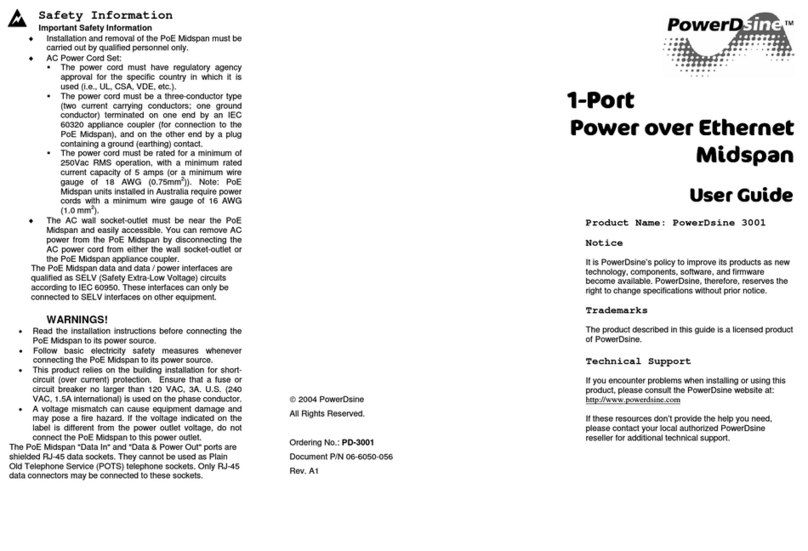Cristec RCE/100 – 1E – 3IG User manual

3.
RCE/100 – 1E – 3IG
&
RCE/150 – 1E – 3IG
For 12 and 24 VDC systems Voltage drop free
2
RCE
Nederlands Gebruikershandleiding
Product beschrijving
De Battery Isolator is een elektronische laadstroomverdeler die op zeer betrouwbare wijze dient voor
het gelijktijdig en verliesarm laden van meerdere accugroepen van dezelfde no
minale spanning. De
Battery Isolator beïnvloed de gunstige laadkarakteristiek van de aange
sloten lader en/of dynamo
niet, zodat de accu's direct met de juiste 'boostspanning' worden
opgeladen. Er hoeft daarom geen
spanningscompensatie worden uitgevoerd, zoals bij con
ventionele scheidingsdiodes Door
toepassing van de Battery Isolator wordt voorkomen dat de accugroepen elkaar kunnen ontladen. De
Battery Isolator is uitsluitend geschikt voor in
stallatie tussen de positieve uitgang van de acculader
en/of dynamo en de positieve aanslui
tingen van de beide accugroepen. Hierbij dienen de negatieve
uitgang van de accula
der/dynamo en de negatieve aansluitingen van de accugroepen direct met
e
lkaar te worden doorverbonden. Kostbare accuschakelaars en losse onderhoudsladers op iedere
accuset zijn hierdoor overbodig geworden
IG aansluiting
De IG-aansluiting kan gebruikt worden om bepaalde elektronisch geregelde dynamo's te la
ten starten
met het laden van de accu's.
Deze dynamo's moeten een spanning meten op de B+ aansluiting. Sluit
in deze situatie de IG aansluiting aan op de plus komend vanaf het contact slot. Hierin is de RCE
wederom uniek in zijn soort.
Installatie
Overtuig uzelf erva
n dat de uitgang van de acculader/dynamo spanningsloos is gedurende de
installatiewerkzaamheden. Verbreek hiertoe aile elektrische verbindingen met de accula
der/dynamo
en de accu's. Zorg er tevens voor dat er geen gebruikers zijn aangesloten op de accugro
epen ter
voorkoming van onveilige situaties. Monteer de Battery Isolator zo dicht mogelijk bij zowel de
acculader/dynamo ais bij de accugroepen, maar nooit direct boven een accu i.v.m. mogelijke
corrosieve accudampen. De Battery Isolator kan warm worden ais ge
volg van grote stromen.
Installeer de Battery Isolator daarom op een goed geventileerde plaats, bij voorkeur op een vlakke
metalen ondergrond (nooit op de hoofdmotor), met de koelribben verticaal geplaatst.
Zie tekening voor de juiste wijze van aans
luiten. Monteer de negatieve aansluitingen van de
accugroepen en de acculader/dynamo op een gemeenschappelijk massapunt. De groene LED aan
de bovenzijde van de Battery Isolator licht op wanneer er spanning op de ingang van de Battery
Isolator staat. De Battery Isolator detecteert automatisch de nominale laad
spanning (12V of 24V). ln
tegenstelling tot conventionele scheidingsdiodes is er bij de Bat
tery Isolator nauwelijks sprake van
spanningsverlies. Bij gebruik van de Battery Isolator dient de uitgangsspa
nning van voedingsbron
daarom NIET te worden verhoogd voor diodecom
pensatie. Ais de lader accuspanning moet
"proeven" alvorens te gaan laden, dan is deze vaak uitgevoerd met een z.g.n. sense-ingang.
Gebruikers handleiding,
Operation manual,
Betriebsanleitung,
Mode d'emploi
Veiligheidsvoorschriften en
-
maatregelen
1. Installeer de Battery Isolator vol gens bovengenoemde instructies
2. Gebruik de Battery Isolator nooit op een locatie met gas- of stofontploffingsgevaar.
4.Aansluitingen en beveiligingen moeten in overeenstemming met de plaatselijk geldende
voorschriften worden uitgevoerd.
4. Gebruik kabels met voldoende draaddoorsnee en houd aile afstanden zo kort mogelijk. Gebruik
deugdelijke kabelschoenen en draai aile aansluitmoeren goed aan.
Ignition switch
Original wire, to be removed!!
Aansprakelijkheid
Fabrikant kan niet aansprakelijk worden gesteld voor:
•Schade ontstaan door het gebruik van de Battery Isolator
•Eventuele fouten in bijbehorende handleiding en de gevolgen daarvan
•Ander gebruik geldend ais niet conform de bestemming van het product
Garantiebepalingen
De fabrikant garandeert dat de Battery Isolator is geproduceerd volgens de wettelijk van toe
passing
zijnde normen en bepalingen. Gedurende de productie en voor aflevering zijn aile B
attery Isolators
uitvoerig getest en gecontroleerd. Wanneer niet volgens de in deze hand
leiding gegeven
voorschriften, aanwijzingen en bepalingen wordt gehandeld, kunnen be
schadigingen ontstaan en/of
het apparaat zal niet aan de specificaties voldoen. Een en an
der kan inhouden dat de garantie komt
te vervallen. De garantietermijn is twee jaar.
Specifications
Type
Number of outputs
Max current
System voltage
Input voltage range
Insulation to ground
Operating temperature
Voltage drop
Dimensions (1 x h x d)
Weight
RCE/100 -1E – 3IG
3
100
12 -24 VDC
8 - 30 VDC
>500V@60 HZ
-40 to +85 °C
0.0V@10A /0.1V@20A
146 x 85 x 158 mm
1075 g
RCE/150 -1E – 3IG
3
150
12 -24 VDC
8 - 30 VDC
>500V@60 HZ
-40 to +85 °C
0.0V@10A /0.1V@20A
146 x 85 x 158 mm
1107 g
LIGHT BOWPROP START
06
-
06
-
2007
RCE
English User M
anual
Product description
The Battery Isolator is an electronic device which is designed to distribute the charge current with a
low voltage drop between several (sets of) batteries with the same nominal voltage. The Battery
Isolator prevents the current from flowing from one battery to another. The Bat
tery Isolator can only
be installed in the positive lead between the supplying source (for in
stance a charger or an
alternator) and the batteries. Therefore the negative output of the supplying source sh
ould be
connected directly to the negative connections of the battery sets. The Battery Isolator has no
voltage drop when the batteries are fully charged. This is achieved by using the latest electronic
technologies, other diode splitters have at least a v
oltage drop of 0,7 Volt and at a high charging
current this voltage drop can reach 1,5 Volt. The voltage drop of the Battery Isolator will never
exceed 0,4 Volt at max amperage. At a charging current of 20 Amps. per battery, the voltage drop
is negligible.
The Battery Isolator has therefore no influence on the charging characteristics of the
charger or the alternator. Diode compensation is not required to be able to charge the batteries up
to 100%
IG connection
The IG-connection can be used to start mode
rn electronic regulated alternators charging the
batteries. These alternators have to measure a certain voltage at the B+ terminal. ln this case the
IG-
connection has to be connected to the batteryvoltage coming from the ignition key switch. This is
an other unique feature of the RCE.
Installation
Be sure that the output of the supplying source is switched off during installation. Disconnect ail
electrical connections to the charger/ alternator and the batteries. Aiso be sure that no consumers
are connected to the batteries during installation, to prevent hazardous situa
tions. Install the Battery
Isolator not only as close as possible to the supplying source, but to the batteries as weil, but do not
install The Battery Isolator straight above the batteries be
cause of possible corrosive sulphur fumes.
The Battery Isolator must be installed in a well
ventilated environment, as high currents will heat up
the Battery Isolator. Preferably, the bat
tery isolator should be mounted on a flat metal surface
(never directly to the main engine), with the fins vertical.
For correct connection see drawing. Connect the negative poles of the battery sets and the
supplying source to a common ground. When DC-
power is available from the Battery charger /
Alternator, the green LED on top of the Battery Isolator illuminates
The Battery Isolator automatically detects the nominal charge voltage (12V or 24V). Unlike
conventional battery isolators, the Battery Isolator is almost free of voltage drops. Therefore, when
the Batte
ry Isolator is applied, the output voltage of the supplying source should NOT be increased
for diode compensation. No internai or external settings are required.
Safety regulations and measures
1. Install the Battery Isolator according to the stated instructions.
2.Never use the Battery Isolator at a location where there is danger of gas or dust explosions.
3. Connections and safety features must be executed according to the locally applicable regul ati
ons.
4. Use cables with appropriate size wire and keep the cable connections as short as possible. Use
reliable terminais and fasten the bolts tightly, but do not over torque.
Liability
Manufacturer cannot be held liable for:
•Damage resulting from the use of the Battery Isolator.
•Possible errors in the included manual and the consequences of these.
Guarantee terms
The manufacturer guarantees that the Battery Isolator has been built according to the legally
applicable standards and stipulations. During production and before delivery ail Battery Isolat
ors
were exhaustively tested and controlled. If Vou fail to act in accordance with the regula
tions,
instructions and stipulations of this user's manual, damage can occur and/or the unit will not fulfil
the specifications. This may mean that the guarantee
will become null and void. The guarantee
period is 2 years.
Specifications
Type
Number of outputs
Max current
System voltage
Input voltage range
Insulation to ground
Operating temperature
Voltage drop
Dimensions (1 x h x d)
Weight
RCE/100 -1E – 3IG
3
100
12 -24 VDC
8 - 30 VDC
>500V@60 HZ
-40 to +85 °C
0.0V@10A /0.1V@20A
146 x 85 x 158 mm
1075 g
RCE/150 -1E – 3IG
3
150
12 -24 VDC
8 - 30 VDC
>500V@60 HZ
-40 to +85 °C
0.0V@10A /0.1V@20A
146 x 85 x 158 mm
1107 g
1
06
-
06
-
2007
3

RCE/100 -1E – 3IG
3
100
12 -24 VDC
8 - 30 VDC
>500V@60 HZ
-40 to +85 °C
0.0V@10A /0.1V@20A
146 x 85 x 158 mm
1075 g
RCE/100 -1E – 3IG
3
100
12 -24 VDC
8 - 30 VDC
>500V@60 HZ
-40 to +85 °C
0.0V@10A /0.1V@20A
146 x 85 x 158 mm
1075 g
RCE/150 -1E – 3IG
3
150
12 -24 VDC
8 - 30 VDC
>500V@60 HZ
-40 to +85 °C
0.0V@10A /0.1V@20A
146 x 85 x 158 mm
1107 g
RCE/150 -1E – 3IG
3
150
12 -24 VDC
8 - 30 VDC
>500V@60 HZ
-40 to +85 °C
0.0V@10A /0.1V@20A
146 x 85 x 158 mm
1107 g
RCE
Deutsch Betriebsanleitung
Produkt beschreibung
Der Sattery Isolator ist sin elektronischer Ladeverteiler zur gleichzeitigen und verlustarmen Verteilung
des Ladestroms zwischen mehreren Batteriesatzen der gleichen no
minalen Spannung. Der Einsatz
des Sattery Isolator sorgt dafür, dass sich die Batteriesatze nicht ge
genseitig entladen. Der Battery
Isolator ist ausschliel3lich geeignet für eine Montage zwischen dem Plus-
Ausgang eines
Stromerregers (Ladegerat oder Lichtmaschine) und dem Plus-
Anschluss der Batteriesatze. Der
Minusausgang des Stromerregers und die Minus
Anschlüsse der Batteriesatze müssen direkt mit
einander verbunden werden.
Installation
Stellen Sie sicher, dass der Stromerreger wahrend der Installation spannungsfrei ist Tren
nen Sie aile
elektrischen Verbindungen von dem Ladegerat / der Lichtmaschine und den Batterien. Es ist
ebenfalls wichtig dass, keine Verbraucher an den Batteriesatzen ange
schlossen sind. Montieren Sie
den Battery Isolator mëglichst
nah an den Stromerreger und ebenfalls mëglichst nah an die
Batteriesatze,
aber niemals direkt oberhalb der Batterien, wegen moglicher korrosiver
Batteriedampfe. Der Battery Isolator kann durch die hohen Strome sehr warm werden. Installieren
Sie deswegen den Battery Isolator in einem gut be
lülteten Raum, vorzugsweise auf einem flachen
Metall-
Untergrund (aber nie direkt auf dem Motor) und mit senkrecht angeordneten Kühlrippen. Für
die richtige Anschlussweise siehe Zeichnung. Verbinden Sie die Minus-Anschlü
sse der Batteriesatze
und den Stromerreger mit einem gemeinsamen Massepunkt Wenn Spannung von dem Akkulader /
der Lichtmaschine zur Verfügung steht, leuchtet die grüne LED an der Oberseite des Battery Isolator
auf. Die Battery Isolator entdeckt die nominale Ladespannung (12 oder 24V) automatisch. ln Gegen-
satz zu den konventionellen Trenndioden kommt es bei dem Battery Isolator kaum zu Span-
nungsverlusten. Deswegen brauchen Sie die Ausgangsspannung des Stromerregers NICHT zur
Diodenkompensation erhohen.
Si
cherheitsvorschriften und
-
maBnahmen
1. Installieren Sie den Battery Isolator gema~ den genannten Anweisungen.
2.Benutzen Sie den Battery Isolator nie in einer Umgebung, in der die Gefahr einer Gasoder
Staubexplosion besteht.
3. Anschlüsse und Sicherheitsvorkehrungen müssen den lokalen Vorschrilten entsprechend
ausgeführt werden.
4. Benutzen Sie Kabel mit geeignetem Querschnitt und halten Sie die Lange moglich kurz. Benutzen
Sie zuverlassige Kabelverbinder und drehen Sie aile Verbindungen fest.
Haftung
Fabrikante haltet nicht für:
1. Durch die Benutzung des Battery Isolator entstandene Schèden.
2. Mëgliche Fehler in der mitgelieferten Anleitung und die daraus entstehenden Foigen.
3.Einen anderen Gebrauch, d.h. einen Gebrauch, der nicht mit der Bestimmung des Produkts
übereinstimmt.
Garantiebestimmungen
Fabrikante garantiert, dass der Battery Isolator unter Einhaltung der gesetzlichen Normen und
Bestimmungen gebaut wurde. Bei der Herstellung und vor der Lieferung werden aile Battery Isolators
weitgehend getes
tet und kontrolliert. Wenn die in dieser Gebrauchsanlei
tung beschriebenen
Vorschriften, Anweisungen und Bestimmungen nicht beachtet werden, kënnen Schèden entstehen
und/oder kann das Gerat nicht den Spezifikationen entsprechen. Das bedeutet, dass keine Ga
rantie
mehr geleistet werden kann. Die Garantiezeit betragt 2 Jahre
Specifications
Type
Number of outputs
Max current
System voltage
Input voltage range
Insulation to ground
Operating temperature
Voltage drop
Dimensions (1 x h x d)
Weight
06
-
06
-
2007
R
CE
Français Mode d'emploi
Description
Le Battery Isolator est un répartiteur électronique conçu pour distribuer le courant de charge avec
une faible chute de tension entre différentes batteries ou parcs de batteries avec la même tension
nominale. Le Battery Isolator empêche le courant de circuler d'une batterie
à
une autre. Le Battery
Isolator peut être installé seulement entre le pôle positif de la source de courant (par exemple un
chargeur ou un alternateur) et les batteries. Le pôle négatif de la sour
ce de courant doit être
connecté au pôle négatif des batteries.
Connexion IG
La connexion IG peut être utilisée pour démarrer des alternateurs modernes régulés
électroniquement
, pour la charge des batteries. Ces alternateurs doivent mesurer une certaine
tension
à
la borne B+. Dans ce cas la connexion IG doit être connectée
à
la tension batterie
venant
de la clé de contact. C'est une autre caractéristique du RCE.
Installation
S'assurer que la sortie de la source de courant est arrêtée pendant l'installat
ion. Débrancher toutes
les connexions électriques au chargeur / alternateur et aux batteries. Vérifier qu'aucun appareil n'est
connecté aux batteries, afin d'éviter toute situation dangereuse. Ins
taller le Battery Isolator très près
de la source de courant et également très près des batteries, mais jamais au-
dessus des batteries,
à
cause de possible dégagements
corrosifs de soufre. Il doit être installé dans un endroit bien
ventilé, en effet les courants élevés augmentent la température du Battery Isolator
. Si possible, il
doit être installé sur une surface en métal
plate (jamais directement sur le moteur), les lamelles
verticales. Pour une connexion correcte
, se reporter au schéma. Connecter les pôles négatifs de la
batterie et de la source de courant
à
la
masse. Lorsque la tension du chargeur / alternateur est
disponible, le voyant vert s'allume. Le Battery Isolator détecte automatiquement la tension nominale
de charge (12V ou 24V). Contrairement aux répartiteurs de charge
à
diodes traditionnels, le Batter
y
Isolator ne provoque qu'une très faible chute de tension. Par conséquent, la tension de sortie
de la
source de charge NE doit PAS être augmentée.
Consignes et mesures de sécurité
1. Installer le Battery Isolator conformément aux instructions.
2.Ne jamais utiliser le Battery Isolator
à
un endroit comportant un risque d'explosion de gaz ou de
poussière.
3. Les raccordements et sécurisations doivent être effectués conformément
à
la réglementation
locale.
4. Utiliser des câbles de section appropriée aussi courts que possibles. Utiliser des cosses et serrer
bien les écrous, mais ne pas les forcer.
Responsabilité
Le fabricant décline toute responsabilité dans les cas suivants
1. Dommage survenu suite
à
l'emploi du Battery Isolator.
2. Eventuelles erreurs dans le manuel correspondant et leurs conséquences
3. Autre utilisation considérée comme non conforme
à
la destination du produit
Conditions de garantie
Le fabricant certifie que le Battery Isolator est fabriqué conformément aux normes et dispositions
légales en v
igueur. Tous les Battery Isolators sont minutieusement testés et contrôlés pendant leur
production et avant leur livraison. L'utilisation non conforme aux consignes, instructions et
dispositions fournies dans ce manuel d'utilisation peut entraîner des domm
ages et/ou l'appareil ne
répondra pas aux spécifications. Ce qui peut donner lieu
à
l'annulation de la garantie. Le délai de
garantie est de 2 ans
Spécifications
Type
Number of outputs
Max current
System voltage
Input voltage range
Insulation to ground
Operating tempe rature
Voltage drop
Dimensions (1 x h x d)
Weight
4
06
-
06
-
2007
5
This manual suits for next models
1
Other Cristec Media Converter manuals
